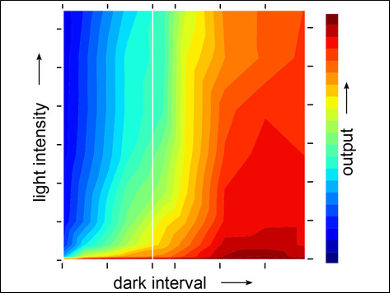Sensory photoreceptors control adaptations to light in a variety of organisms. They serve as main targets in optogenetics, a recently developed technique that can be used for the reversible, non-invasive, and spatiotemporally precise manipulation of cellular physiology by light.
To achieve finely tuned control of light-responsive biological systems, Andreas Möglich and colleagues, University of Bayreuth, Germany, designed experimental protocols and hardware for the application of pulsed lighting. The team constructed a programmable matrix of light‐emitting diodes (LEDs). The pulse frequency of intermittent light can be used as an additional input variable to light quantity and quality for controlling system output in optogenetics and photobiology. Pulsed illumination of a single color is enough to sequentially trigger the expression of several genes.
Optimized schemes for pulsed illumination could lead to a reduction of required light dose and allow the combination of several light-responsive circuits.
- Optogenetic Control by Pulsed Illumination,
Julia Hennemann, Roman S. Iwasaki, Tamara N. Grund, Ralph P. Diensthuber, Florian Richter, Andreas Möglich,
ChemBioChem 2018.
https://doi.org/10.1002/cbic.201800030




